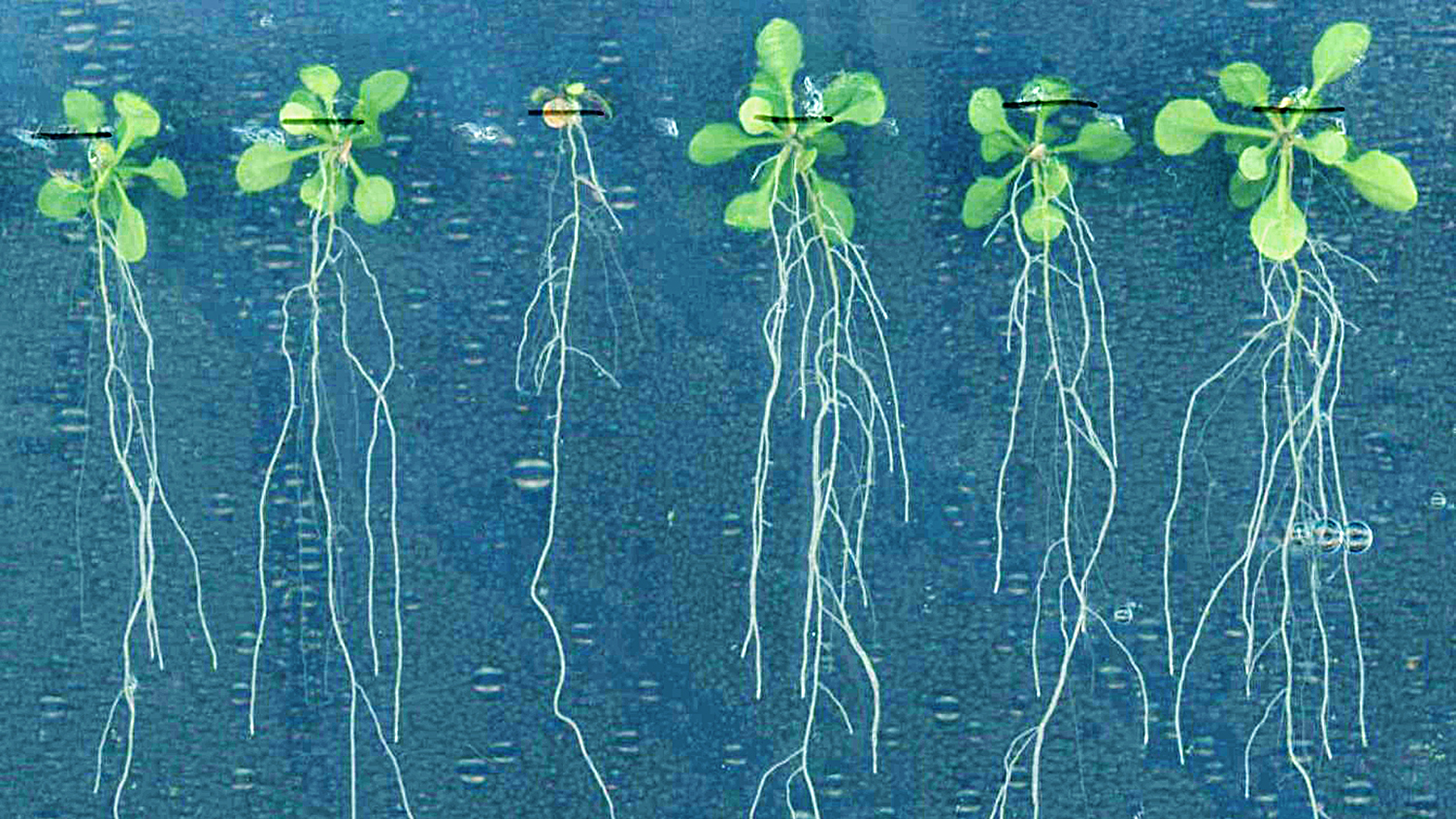‘Conductor’ Gene Found in Plant Root Stem Cell ‘Orchestra’

For Immediate Release
In a new paper, researchers at North Carolina State University lift the veil on the “conductor” plant root stem cell gene that helps orchestrate and coordinate stem cell division of different root stem cell types, ensuring the harmonic communication necessary for plant growth and maintenance.
Ross Sozzani, an NC State associate professor of plant and microbial biology and corresponding author of the paper, says that the conductor behind this communication – which is critical to key aspects of plant development, including plant cell division, proliferation and differentiation – is a gene called TCX2, which is present in all the different plant root stem cells.
Like an orchestra with its various component instruments working together to create beautiful music, plant root stem cells work within various networks to perform various functions. TCX2 ensures that these local networks communicate with each other, similar to an orchestra conductor making sure that horns, for example, don’t drown out the violins.
The interdisciplinary research included molecular biology experiments in Arabadopsis thaliana, or mustard weed, as well as mathematical modeling and machine learning approaches to narrow down some 3,000 candidate genes to learn about the causal relationships between different root stem cell networks.
“We saw that TCX2 was able to target different stem cell genes in different stem cell networks and regulate their functional timing,” Sozzani said.
To validate the network prediction and mathematical modeling, the researchers took an experimental approach. They both overexpressed and knocked out the TCX2 gene and found that the timing of plant root stem cell division suffered. Sozzani and Natalie Clark, the paper’s first author and a former NC State biomathematics graduate student, likened this to the principle behind the story of Goldilocks and the Three Bears – the porridge was acceptable only when its temperature was “just right.”
Sozzani said that future work will use these findings and 3D bioprinting to learn more about building better plants.
“We can physically change the position or number of these root stem cells and see how those changes help or harm this harmonic system,” she said. “If you wanted to help a plant become more drought tolerant, for example, how do you build more vascular tissue which is important for that function? 3D bioprinting allows us to test this by positioning stem cells in desired spatial arrangements.”
The paper appears in Nature Communications. First author Clark is a former recipient of a NSG GRFP fellowship and is now at Iowa State University as a USDA postdoctoral fellow. Co-authors from NC State’s Department of Electrical and Computer Engineering include associate professor Cranos Williams and graduate student Eli Buckner. Abigail Simmons and Dominique Bergmann from Stanford University also co-authored the paper.
The research was funded by the National Science Foundation CAREER award (MCB-1453130) and by a grant from NC State’s College of Agriculture and Life Sciences Research Foundation to Sozzani.
-kulikowski-
Note to editors: An abstract of the paper follows.
“Stem-cell-ubiquitous genes spatiotemporally coordinate division through regulation of stem-cell-specific gene networks”
Authors: Natalie M Clark, Eli Buckner, Adam P Fisher, Emily C Nelson, Thomas T Nguyen, Maria A de Luis Balaguer, Tiara Butler-Smith, Parnell J Sheldon, Cranos M Williams and Rosangela Sozzani, North Carolina State University; Abigail R Simmons and Dominique C Bergmann, Stanford University
Published: Dec. 6, 2019 in Nature Communications
DOI: 10.1101/517250
Abstract: Stem cells are responsible for generating all of the differentiated cells, tissues, and organs in a multicellular organism and, thus, play a crucial role in cell renewal, regeneration, and organization. A number of stem cell type-specific genes have a known role in stem cell maintenance, identity, and/or division. Yet, how genes expressed across different stem cell types, referred here as stem-cell-ubiquitous genes, contribute to stem cell regulation is less understood. Here, we find that, in the Arabidopsis root, a stem-cell-ubiquitous gene, TESMIN-LIKE CXC2 (TCX2), controls stem cell division by regulating stem cell-type specific networks. Development of a mathematical model of TCX2 expression allowed us to show that TCX2 orchestrates the coordinated division of different stem cell types. Our results highlight that genes expressed across different stem cell types ensure cross-communication among cells, allowing them to divide and develop harmonically together.


